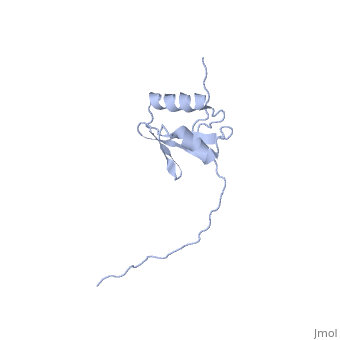Structure
ExbD has a single transmembrane domain, with residues 1 to 22 on the cytoplasmic side and 44 to 141 in the periplasm (see 3D structure 2PFU). Residues 23 to 43 are within the cytoplasmic membrane and it is in this region, from residues 18 to 43, that the only hydrophobic residues in ExbD can be found[1].
ExbD has been shown to be approximately 25% identical and 70% similar to the TolR sequence[1], therefore it can be assumed that these two proteins will have a similar arrangement of their sequences.
Function
ExbD is present in cells only in a complex with ExbB, where is affects the functioning of the TonB complex both in how it responds to the proton motive force as well as its affinity with either the cytoplasmic or outer membrane[2]. It has also been shown that TolR can replace the function of an ExbD mutant just as TolQ can with ExbB, suggesting an evolutionary link between the two complexes[3].
Like TolR, ExbD is also involved in the uptake of colicins across the outer membrane of Escherichia coli, but unlike TolR which transports group A colicins, ExbD transports group B colicins. It is also involved in the transferring of vitamin B12 and ferric siderophores using energy-coupled transport.
The activity of ExbD can be affected with mutations of the single charged amino acid (here D25N) which lies close to the transmembrane region. This can also be said of the other transmembrane proteins ExbB, TolQ and TolR.


